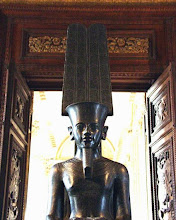Dead Stars Collide, Explode
This artist's conception shows two white dwarf stars spiraling in toward each other until they collide. A collision like this is believed to have spawned supernova 2006gz. Credit: NASA/Dana Berry, Sky Works Digital. A massive explosion in the deep reaches of space stemmed not from one dying star, as is typical, but from two dead ones that collided as the climax of a long orbital dance, new research shows.
A massive explosion in the deep reaches of space stemmed not from one dying star, as is typical, but from two dead ones that collided as the climax of a long orbital dance, new research shows.
Two white dwarf stars slowly spiraled into each other to touch off a supernova explosion called SN 2006gz and discovered last year in a spiral galaxy some 300 million light-years from Earth, said the study's lead author Malcolm Hicken.
"This finding shows that nature maybe richer than we suspected, with more than one way to make a white dwarf explode," said Hicken, a graduate student at the Harvard-Smithsonian Center for Astrophysics.
The research is detailed in the Nov. 1 issue of the Astrophysical Journal Letters.
A white dwarf is the remains of a star with too little mass on its own to end its stellar life as a supernova, the cataclysmic explosions that redistribute material back into space. The Sun, as well as stars with up to eight times its mass, will ultimately end up as white dwarfs.
Astronomers split supernovas into two categories: the explosion of a young, massive star whose core collapses, or the cataclysmic result of a white dwarf star siphoning gas from a stellar companion until it, too, blows itself apart.
Originally, astronomers thought that supernova SN 2006gz was just another example of a white dwarf stealing material from a partner star. But a closer look revealed signs of extra carbon and silicon, hallmarks of a smash-up between two white dwarf stars.
SN 2006gz was also brighter than researchers expected, suggesting that its origins included more material than the 1.4 solar mass upper limit of a single white dwarf star.
The observations offer new evidence for what until now has been only a theoretical way for supernovas to form. Since single white dwarf-spawned supernovas, also known as Type 1a explosions, are used as a standard for judging cosmic distances, separating them from those caused by two-white dwarf collisions will be critical for future research, Hicken said.
"[W]e have to be careful not to mistake a double white-dwarf explosion for a single white-dwarf blast," he added. "SN 2006gz was easy to recognize, but there may be less clear-cut cases."






